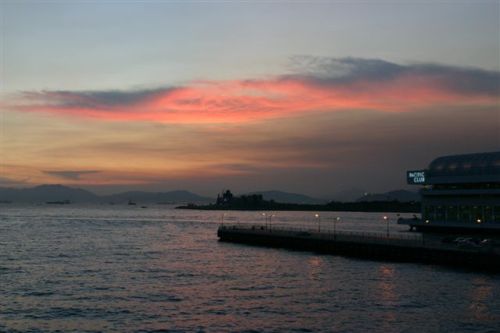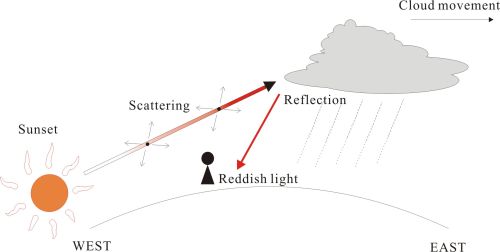"Red sky in the morning, sailors take warning. Red sky at night, sailors delight." explained
"Red sky in the morning, sailors take warning. Red sky at night, sailors delight." explained
YEUNG Pui-yi

Sometimes the sky appears very colourful around sunrise and sunset. At these times, the sun shines from a low angle. Sun rays have to go through a thick atmosphere, resulting in scattering by water vapour, water droplets, dust particles etc. in the air. Light with shorter wavelength, e.g. cyan, blue or purple, is scattered away, leaving red, orange and yellow, turning the sky reddish.
In mid-latitude region, storms and rains usually move from west to east. A reddish sky around sunrise means a lot of water vapour already present in the atmosphere. As clouds come in from the west, rainy weather is thus expected. This explains why "Red sky in the morning, sailors take warning".

A reddish sky near dusk means that weather has improved in the upstream area to the west. Sunlight scattered by the atmosphere is reflected by clouds, making the sky red. As the clouds overhead have moved eastward, the weather is expected to improve. That explains why "Red sky at night, sailors delight".

The relationship between red sky and weather is rather complicated in real life. One example is that near dusk, the sky can become reddish temporarily after rain. Besides, especially in low latitude areas such as Hong Kong, weather systems sometimes move from east to west, e.g. typhoons, and not from west to east. Therefore, one cannot fully understand how the weather changes simply by just looking at the colour of the sky. To make an accurate weather forecast, it is necessary to take account of other weather factors and carry out a full analysis.